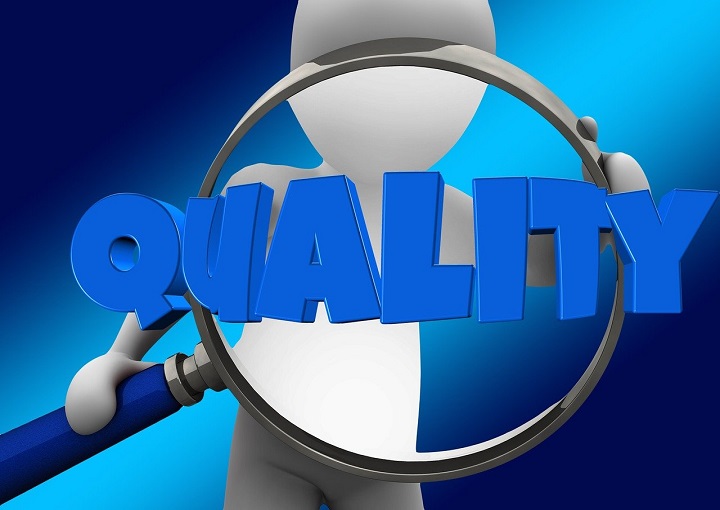Discover why quality checking is crucial for any business or project, and learn how to perform effective quality checks with our helpful guide. Improve your processes and ensure top-notch results by understanding the importance of quality checking.
Quality is essential in any industry, and quality checking is an essential process that should not be ignored. Quality checking ensures that the product or service meets the requirements of the customers and that it is free from any defects or errors. In this article, we will discuss the importance of quality checking and how to do it effectively.
Introduction: Quality checking and its importance
Quality checking is the process of inspecting a product or service to ensure that it meets the requirements and expectations of the customer. Quality checking is a critical step in any industry, as it helps to identify defects or errors that could affect the overall quality of the product or service.
Quality checking is essential because it ensures that the product or service meets the required standards and specifications. It helps to prevent defects, errors, and other issues that could lead to customer dissatisfaction. Additionally, quality checking helps to improve the overall efficiency of the production process, as it helps to identify areas that need improvement.
The importance of quality checking
Quality checking is crucial because it helps to ensure that the product or service meets the required standards and specifications. When a product or service meets the required standards, it ensures customer satisfaction, which is essential for any business. Quality checking also helps to prevent defects and errors, which can lead to customer dissatisfaction and loss of business.
Benefits of quality checking
Quality checking provides several benefits to businesses, including:
- Ensuring customer satisfaction
- Reducing the cost of production
- Improving the efficiency of the production process
- Enhancing the reputation of the business
- Reducing the risk of product recalls
- Increasing customer loyalty and retention
Types of quality checking
There are three main types of quality checking:
Incoming inspection
Incoming inspection involves inspecting raw materials, components, or other items before they are used in the production process. Incoming inspection helps to ensure that the raw materials meet the required standards and specifications and that they are free from defects or errors.
In-process inspection
In-process inspection involves inspecting the product or service during the production process. In-process inspection helps to identify defects or errors early in the production process, which can help to prevent further problems down the line.
Final inspection
Final inspection involves inspecting the finished product or service before it is released to the customer. Final inspection helps to ensure that the product or service meets the required standards and specifications and that it is free from defects or errors.
Tools for quality checking
There are several tools that can be used for quality checking, including:
Visual inspection
Visual inspection involves inspecting the product or service for any visible defects or errors. Visual inspection is a simple and effective way to identify defects or errors that could affect the overall quality of the product or service.
Measurement tools
Measurement tools, such as calipers, micrometers, and gauges, are used to measure the dimensions of the product or service. Measurement tools are essential for ensuring that the product or service meets the required specifications and standards.
Steps for quality checking
To effectively perform quality checking, the following steps should be followed:
Establish standards and procedures
The first step in quality checking is to establish standards and procedures. This involves identifying the requirements and specifications that the product or service must meet. Standards and procedures should be clearly defined and communicated to all team members involved in the production process.
Train the quality control team
The quality control team should be properly trained on the standards and procedures for quality checking. They should be equipped with the necessary skills and knowledge to identify defects or errors and to perform the necessary inspections.
Conduct quality checks at every stage
Quality checks should be conducted at every stage of the production process. This includes incoming inspection, in-process inspection, and final inspection. Quality checks should be conducted using the appropriate tools and techniques, and any defects or errors should be addressed immediately.
Record the results
The results of the quality checks should be recorded and documented. This helps to identify any trends or patterns in the defects or errors and to track the effectiveness of the quality checking process. Documentation also helps to ensure that the product or service meets regulatory requirements.
Challenges in quality checking
While quality checking is essential, there are several challenges that businesses may face, including:
Lack of resources
Quality checking requires resources, including time, money, and personnel. Small businesses may struggle to allocate the necessary resources for quality checking, which can lead to a lower quality product or service.
Human error
Human error is a common challenge in quality checking. Even with the proper training, team members may overlook defects or errors, leading to a lower quality product or service.
Changing requirements
Requirements and specifications for a product or service may change over time, which can make quality checking more challenging. The quality control team must stay up-to-date with the latest requirements and adjust their processes accordingly.
Conclusion
Quality checking is a critical process that should not be ignored. It helps to ensure that the product or service meets the required standards and specifications and that it is free from defects or errors. By following the steps outlined in this article, businesses can effectively perform quality checking and improve the overall quality of their product or service.
FAQs
1. What is quality checking?
Ans. Quality checking is the process of inspecting a product or service to ensure that it meets the requirements and expectations of the customer.
2. Why is quality checking is important ?
Ans. Quality checking is important because it helps to ensure customer satisfaction, reduce the cost of production, improve efficiency, enhance reputation, reduce the risk of recalls, and increase customer loyalty.
3. What are the types of quality checking?
Ans. The types of quality checking include incoming inspection, in-process inspection, and final inspection.
4. What are the tools used for quality checking?
Ans. Tools used for quality checking include visual inspection and measurement tools.
5. What are the challenges in quality checking?
Ans. Challenges in quality checking include lack of resources, human error, and changing requirements.

